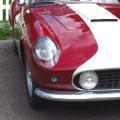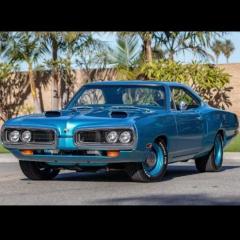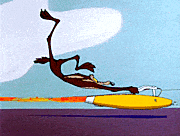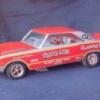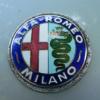-
Posts
8,853 -
Joined
-
Last visited
Previous Fields
-
Scale I Build
Multiple.
Profile Information
-
Full Name
Peter W.
Recent Profile Visitors
17,295 profile views
peteski's Achievements

MCM Ohana (6/6)
-
Since you specify sugar-free sodas, does that imply that soft drinks with real sugar do not foam up as much? Also, the volume of foam generated is related to the speed of the pour, the height of the pouring stream, the temperature of the liquid and of the container your are pouring into it, and also how clean the walls of the container are. How's that for a getting technical about foaming? Personally I like as much carbonation as I can get, especially if I don't drink all of the container rather quickly. I hate flat soda! It's gross.
-

Now, this is scary...
peteski replied to Matt Bacon's topic in General Automotive Talk (Trucks and Cars)
Unfortunately I suspect AI is already in your life without you even realizing it. It will be very interesting how things turn out in the next 10 years or so, or even sooner. -
For over 30 years I have been using a bare-bones basic food dehydrator. On the bottom it has a 40W heating element and it has adjustable ventilation slots on the bottom and top. It doesn't even have power switch - you plug it in to turn it on. It has served me quite well. I have a cooking thermometer for monitoring its temperature and i have the vents adjusted for around 110-120 deg. F. No need for fancy adjustments. It came with multiple stacking hoops with food drying surfaces which I had to remove to create a single large space inside for drying car bodies. You say that it doesn't get very warm. Have you taken a temperature reading inside? 110 deg. F is not *ALL* that warm, and it is perfect for drying paint on plastic parts. As for it being very small, you must have seen how big (or small) its box was.
-
Been on eBay since 1999 and sold (in the past) and buy there. It is a huge company and it is safe to use (just like amazon is, since eBay is slowly turning into amazon-like marketplace rather than an auction site). But with tens of millions of transactions there bound to be a small fraction of problematic ones. With few thousands of purchases I made there I might have had a problem or two (don't remember the specifics) but overall I think Bay is as safe as any other online company. I also only use PayPal. I'm also not a fan of some of their more recent "features", but they are the largest marketplace of that kind after all, with the largest audience in the world. BTW, there is a sticky eBay thread for this type of discussion in the General section
-
Yes, it is important to use hard cutting surface, and glass or ceramic tile is the old standby. However those are so hard that they quickly dull the cutting blade. I used to use them at first, but then I started using a piece of 1/16" thick or similar sheet aluminum as the cutting surface. It is hard enough to prevent the photoetched item being cut from distorting, yet it is soft enough not to appreciably dull the cutting blade. Works really well.
-
Well if someone scans the small-scale images (bitmap or raster format) then convert them (trace them) into vector graphic format, then they can be resized without any quality degradation. I design most of my decal artwork in vector format. Vectorizing the bitmap graphics is a time consuming process. I suspect that in a near future AI-based auto-tracing processes will make this task easier and quicker. I still do mine manually.
-

Revell (Monogram) 1/24th scale, 1985 Pontiac Fiero
peteski replied to Luc Janssens's topic in Car Kit News & Reviews
I'm almost certain that the original run had that tree plated. Even looking at that tree parts, it holds parts which would customarily be plated. Yes, there weren't many plated (or polished aluminum, or stainless steel parts on 1:1 Fiero, and the wheels were aluminum mags, but having those parts plated makes painting them easier. The wheel faces were very shiny bare turned aluminum with a clear coat, while all the recessed areas were black. On a plated model wheel you just spray the entire wheel black (like Testors flat black), and right after the paint is dry you wipe the rim's surface with a paper towel or a piece of rag moistened with paint thinner. That will remove the paint from the smooth plated surface, leaving rest of the wheel black (just like the 1:1 rims). Nice and easy. If you find the plating too shiny, you can spray it with a flat clear. If they are ribbed, the same can be done for rocker arm covers. If those items are unpainted plastic, they have to be dealt with other, not as easy ways. -

Revell (Monogram) 1/24th scale, 1985 Pontiac Fiero
peteski replied to Luc Janssens's topic in Car Kit News & Reviews
The tree with wheels is not plated? The are really downgrading their kits. For a while Revell AG had their decals printed by Cartograph (Italian company making top-quality decals). Looks like that's not the case either,. -

Progress or stupidity? You decide...
peteski replied to Ace-Garageguy's topic in General Automotive Talk (Trucks and Cars)
Funny! What was old is new again. Lights which were tied to steering were popular in higher end cars early in the 20th Century, and also in the '60s Citroen DS21 also had that feature. There were probably others too. But back then they used mechanical linkages tying them to the steering linkages where I suspect yours are driven by servo motors controlled by one of dozen of on-board computers. Sounds like they are performing a selftest/calibration when you start the car. -
Assuming custom-made decals? Not sure about "best", but this might be helpful:
-

Progress or stupidity? You decide...
peteski replied to Ace-Garageguy's topic in General Automotive Talk (Trucks and Cars)
As my last post indicated I'm not a fan of all that technology in cars, but more and more even low-end new cars include all sorts of high-tech stuff in them. Pretty soon there will be no escape. Sure, you can get a vintage used car, but maintaining them will get more and more difficult. -
In marked spots only? I see that you're already violating the rules!
-

Progress or stupidity? You decide...
peteski replied to Ace-Garageguy's topic in General Automotive Talk (Trucks and Cars)
But just look at all the fancy bells and whistles in new cars (they are even Internet-connected). All those creature comfort features and fancy electronics we just can't live without while driving. And it is all very expensive! It's mind boggling. -
How about mask and paint using satin black paint. If ordering, your best bet for a fresh sheet (black likely doesn't sell well in hobby stores) is to order it directly from BMF.
-

Polishing compound to repaint
peteski replied to Chuckyg1's topic in Model Building Questions and Answers
If the polish is silicone-based, even traces of it left on the surface (after sanding) will likely cause fisheyes in the next coat of paint. But solvents mentioned earlier should be able to remove any traces. If it was not silicone-based then no worries. I believe that Novus is silicone-free.

.thumb.png.e64ca4fead948adbdf6a111229b6cf2f.png)

